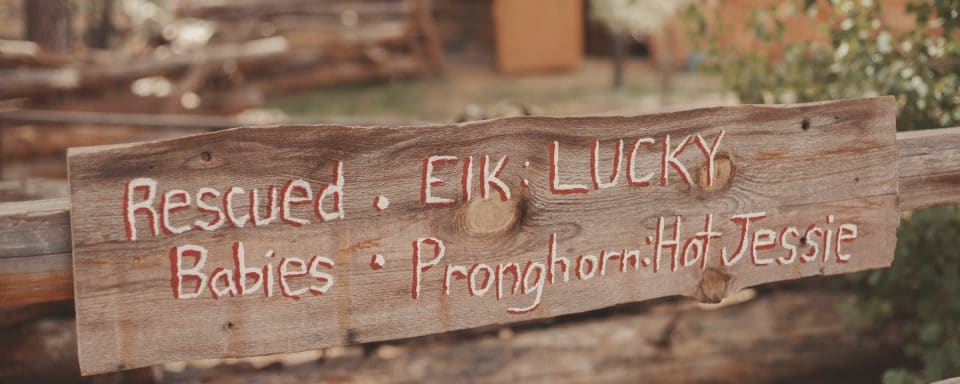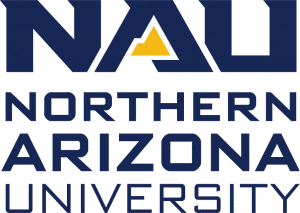It all started with a teddy bear.
Then raising and keeping pets, going hunting with his dad and realizing he was the only ‘90s kid whose bedroom walls were covered in posters of Jack Hanna, Steve Irwin and Jeff Corwin, instead of Tony Hawk, Kelly Kapowski and The Ninja Turtles—Dave O’Connell was destined to work with animals.
He also was destined to attend Northern Arizona University—both his parents are alumni and met at the university, and he followed suit.
He spent five years earning a bachelor’s degree in biology, with an emphasis in fish and wildlife management. He learned as much as he could about animals, which only fueled his passion to pursue working with them as a career. But in addition to his education and arguably more important, he lived.
“Adventure, friends, fun, heartbreak, love, hard work, disappointment—all in a safe place for me to experience these things,” he said. “If it wasn’t for the education I received and life experiences I left NAU with, I wouldn’t be even close to where I am at today. Shoot! If it wasn’t for NAU, I wouldn’t have met my wife!”
He, quite literally, followed in his parent’s footsteps.
Since graduating in 2011, O’Connell has worked at several zoos and wildlife refuges throughout Arizona—most recently, Bearizona Wildlife Park, a 160-acre drive-through nature reserve 30 miles outside of Flagstaff in Williams.
After nearly three years working at the park, he has his morning routine down to a science—wake up at 6:30 a.m., brush his teeth, throw on his Bearizona sweatshirt, grab the lunch his wife made for him, then be out the door by 7 a.m. to head to work. What was often unknown, and in one particular instance completely unexpected, was what the rest of his day would look like.
Some days it would consist of managing the rebuild of a fence after a 2,400-pound American bison in rut got overly aggressive; others involved training Cloe, the two-pound fennec fox to turn in circles and touch her nose to a ball; giving shots to Nacho and Libre, the 150-pound leopard siblings and newest park members; or mapping out new, bigger and better enclosures for Bearizona’s 160 North American inhabitants—a number that is constantly growing.
“I am lucky to work at such a great place because pretty much every day I wake up, I am excited to go to work. There is always something new for me to learn about and do.”
One summer morning, however, brought something O’Connell never expected—a new meaning to the word “lucky.”
A Lucky story
At 6 a.m. on June 10, as the sun rose in the east, the forest and the wildlife in it slowly woke.
A driver traveling down the stretch of Interstate 40 between Flagstaff and Williams didn’t notice the large elk step onto the pavement. The quiet morning filled with cricket chirps and bird songs was abruptly interrupted with the screeching of SUV tires and crumpling of metal. The elk never did make it to the other side of the road. The unfortunate accident ended in a life lost, and traumatized driver, fortunately with only minor injuries.
But unlike most of the animal deaths that occur along the highway, the story does not end here.
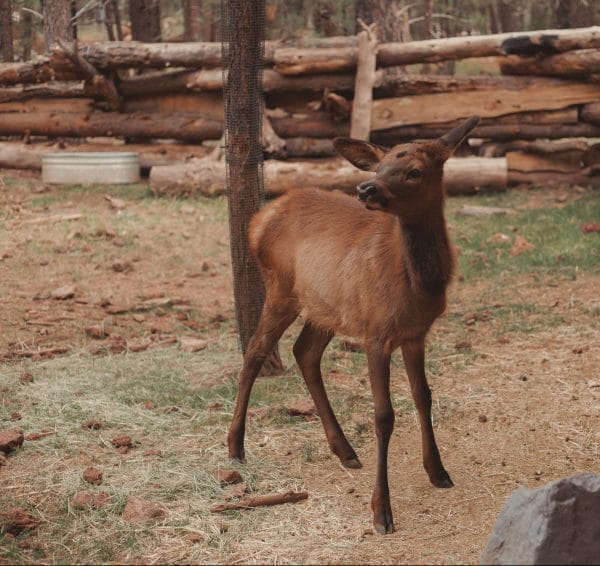
What she found left her in disbelief—a newborn calf, covered in blood and goo, lying next to what she presumed to be its dead mother.
Clark had seen newborn goats before, thanks to her kids’ involvement with 4-H Club, and she knew right away this creature had not been out of the womb long.
She began to connect the dots and consider the unimaginable: the impact of the vehicle not only caused the death of the then-pregnant elk, but the trauma also induced labor.
“I knew something had to be done pretty quickly or it wouldn’t survive,” Clark told the Arizona Republic.
She called Arizona Game and Fish for guidance, who directed her to Bearizona Wildlife Park—though the park officials had never dealt with a trauma like this, owner Sean Casey promised he would do everything he could to help the calf. Clark wrapped the 30-pound elk in sheets and blankets she found in her RV, then headed to Willams to deliver her. Before dropping her off, the Clark family made one request—that the calf be named Lucky.
Whether or not she would live up to her name was yet to be determined.
[block-quote align=”center”]When the calf showed up, she was pretty beat up and barely alive. There was no expectation of her surviving—only hope.[/block-quote]
The on-call park veterinarian did everything he could, performing extensive surgery and using more than 30 staples to secure the gaping wounds that covered the calf’s body. Her survival was out of his hands.
The first week was the most crucial. Though the park closed at 4 p.m., O’Connell and the rest of the animal staff had to provide around-the-clock care. They took turns taking the calf home, waking up every three hours to bottle feed her.
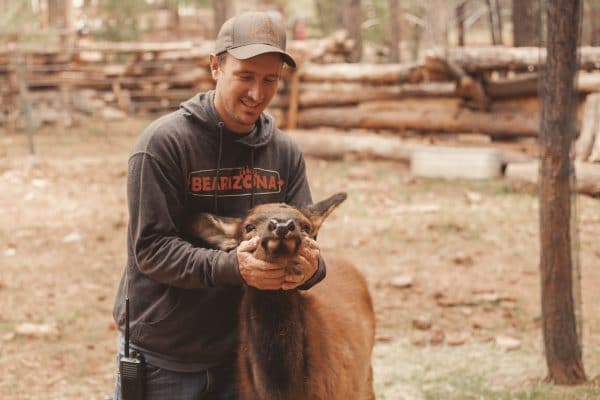
“It made for a long week,” said O’Connell, director of Animal Staff. “We talked with our vet often to make sure we were doing as much as we could do to give her the best chance of survival.”
Lucky survived the first week. And the week after. And the week after that, growing stronger each day.
“As you can imagine, that is not an easy way to enter this world. But now, she is a big, happy healthy elk calf with quite the personality.”
Today, Lucky is a 120-pound 4-month-old, and it’s safe to say she is well-deserving of her name. Fading scars and several small bald spots are the only evidence of her tragic introduction to life on Earth.
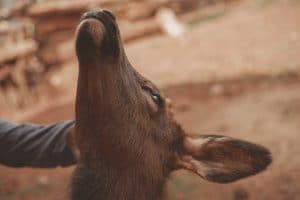
Despite putting up walls in hopes of not getting too attached to any of the animals, O’Connell and Lucky have grown close—their bond is obvious when he stops by her enclosure to pay a visit.
He can count on one hand the number of animals he’s gotten especially attached to over the years: Jack, one of the park’s biggest black bears, and Lucky.
“When she’s old enough, Lucky will eventually be introduced to the other elk at the park,” O’Connell said. “It’s part of my job to make sure the animals are healthy, happy and well taken care of.”
To make sure of this, he plans to be by her side for the rest of her long, lucky life.
Bearizona Wildlife Park, which offers a 20-acre walk-through area in addition to the drive-through portion, is open to the public 8:30 a.m. to 4 p.m. daily. Lucky can be seen in an enclosure with her best animal friend Hot Jesse, a pronghorn named after her rescuer, NAU alumnus Jesse Baker. Baker and O’Connell would like to remind readers of the importance of keeping wildlife wild—if you encounter what appears to be an abandoned baby animal in the wild, know that more often than not, the mother is nearby, so leave the baby alone. More information including admission costs to Bearizona can be found online.
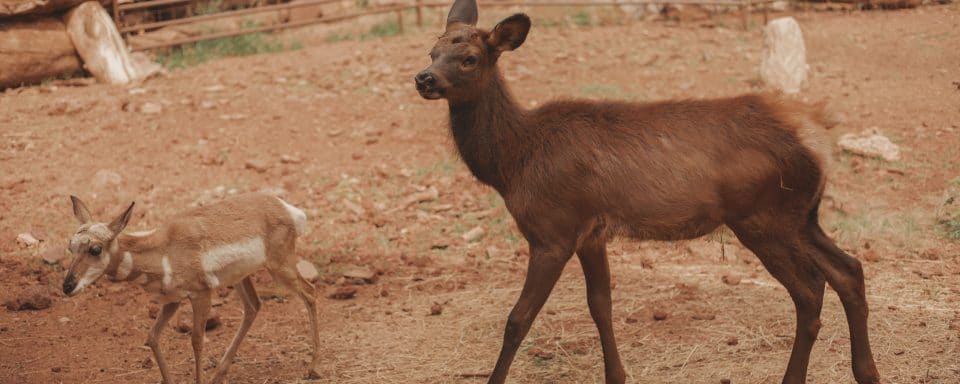
Carly Banks | NAU Communications
(928) 523-5582 | carly.banks@nau.edu





